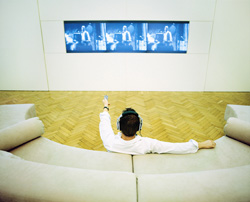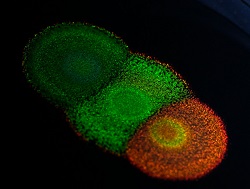Large flat-screen TVs — optimising image quality while reducing power consumption
LCDs are likely to remain in a leadership role for a while. However, despite their popularity, they have limited energy efficiency. Europeans spend several hours watching TV, raising concerns about the cumulative effects of high energy consumption on the environment. Hence, research efforts have focused on reducing energy consumption in LCDs. Unfortunately, replacing the colour filter — a power-hungry component, with a temporal colour synthesis (field-sequential colour (FSC) display) produces an undesirable side-effect called colour breakup (CBU). CBU is a transient distortion in perceived colours during eye movement related to the separated primary red, green and blue colour frames. Scientists initiated the EU-funded project 'Low power high image quality display using colour sequential display technology' (GREEN) to develop novel FSC–LCD technology that produces high-quality images with low power consumption. Researchers exploited a novel backlighting technique called local primary desaturation (LPD). LPD can 'desaturate' the primary colours by temporally and spatially modulating the backlight intensity to minimise CBU. In addition to measurements demonstrating significant reduction in power consumption and good image quality, psychophysical tests showed that the perception of CBU became nearly negligible. The two solutions proposed resulted in a commercial, off–the–shelf LCD with very low production cost. The team proceeded to develop a CBU measurement tool for future FSC–LCD design and evaluation and also proposed a 3D display configuration. The project also explored the use of light-emitting diodes (LEDs) in LPD technology. In addition, an LED dot matrix lighting solution was proposed for application in areas including retail stores, theatres and surgical rooms with research outcomes being published in 13 scientific papers. GREEN delivered a low-cost, high-efficiency LCD with enhanced image quality and reduced perceivable CBU. This will garner broad industry and consumer support due to significant reduction of global energy consumption resulting from affordable and large flat screen TVs.







